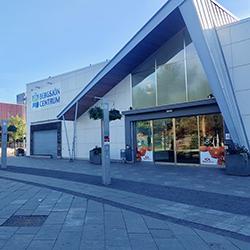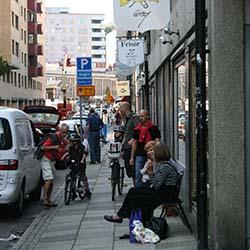How urban space can contribute to less segregation
There are city districts all around Sweden where people with significantly less socio-economic possibilities are living. Education and access to the labour market are two of the main reasons for these urban patterns. The physical form of the city also affects segregation, inclusion and exclusion. The City of Gothenburg wants to translate knowledge in this area to concrete methods for urban planning. The Swedish National Board of Housing, Building and Planning have granted means to the City of Gothenburg for the development of these methods. The results will help 15 city districts in Sweden with the most severe socio-economic challenges.
Divided City is a research project that will meet the social challenges in Gothenburg by investigating how to overcome the spatial segregation. A start-up event for the project was held in Gothenburg at the seventh of October. Here, Ann Legeby, Lars Marcus and Meta Berghauser Pont from KTH School of Architecture, shared their previous experiences on the topic.
The shape gives impact
The shape of the urban environment and the lives we live in cities are interdependent. The Research team Spatial Analysis and Design, KTH School of Architecture, assumes that everything in our built environment holds a representative symbolic and performative/functional form. An example are the million homes programme areas in Sweden, that are very alike physically (symbolic) but the lives of people in these areas are very diverse (functional). To meet the challenges in Gothenburg, we need to learn more about the functional form of the city. This is a spatial capital that can be used for making our cities more inclusive.
Include the entire city
A city district is never isolated from its surroundings. Ann Legeby, points out that neighboring parts of a city needs to work together to meet complex challenges such as segregation, exclusion and inclusion. Public spaces are an example where such collaboration are vital, to create proximity between people.
Use the secondary benefits
Traditionally, planning takes its starting-point in primary benefits such as the division of land between city functions such as housing, office spaces and daily services. The social aspects in urban planning have been more emphasized since the end of the 1990s. Divided City claims that urban spaces now need to be shaped so that secondary needs, such as informal and communicative benefits and indirect interaction, are promoted.
Fair distribution of resources
Urban spaces and urban forms influence how the common resources of the city are distributed. What chances in life that are created for the citizens, are consequently dependent on were in the city they live. In other words, urban planning greatly impacts how fair and socially sustainable the city becomes.
More about the project
Divided City started in September, by gathering knowledge and statistics for a map-based database. Central to this work is the tool Social Impact Assessment used by the City of Gothenburg. The next step in the project is a workshop with users of this tool. Divided City will evaluate which methods of analysis within research that could be applied in the city's urban planning. The result will contribute to applied methods for social aspects in urban planning.
The project is a part of the Swedish Government initiative for knowledge development for urban development areas. The Swedish National Board of Housing, Building and Planning have been assigned to manage research, and have granted funds to projects in Landskrona, Malmö and Gothenburg. The research in Gothenburg is performed by KTH School of Architecture and is initiated by the City of Gothenburg. Mistra Urban Futures supports and administrates the knowledge production.
The project Divided City will present its result on an Urban Lunch-time in Gothenburg during spring 2014.
Read more about the project Divided City







